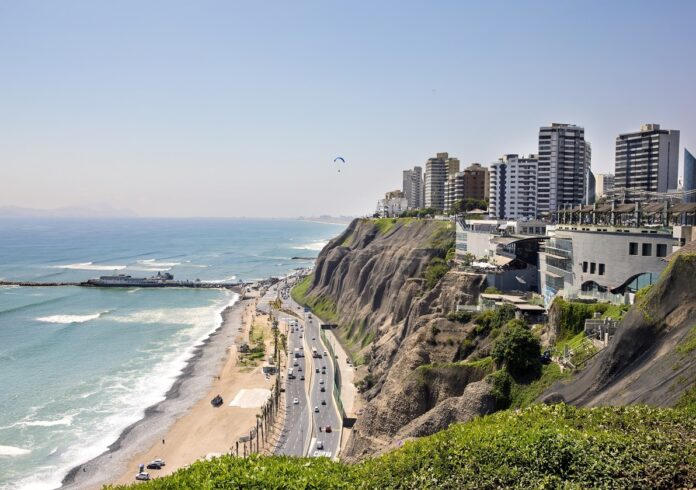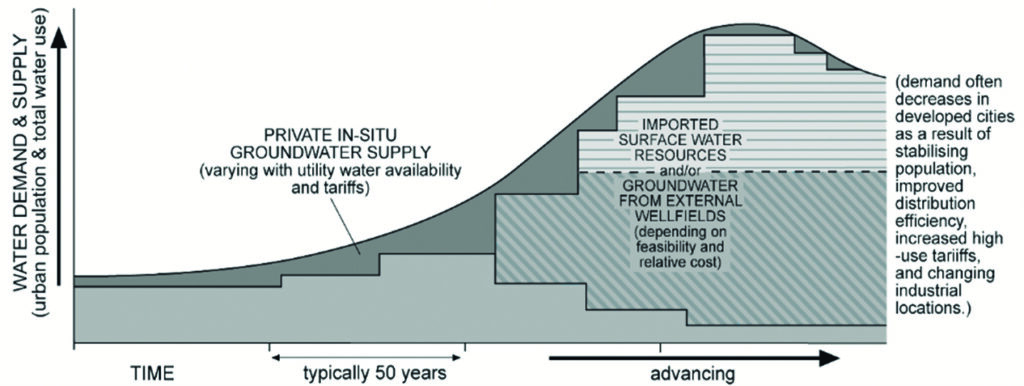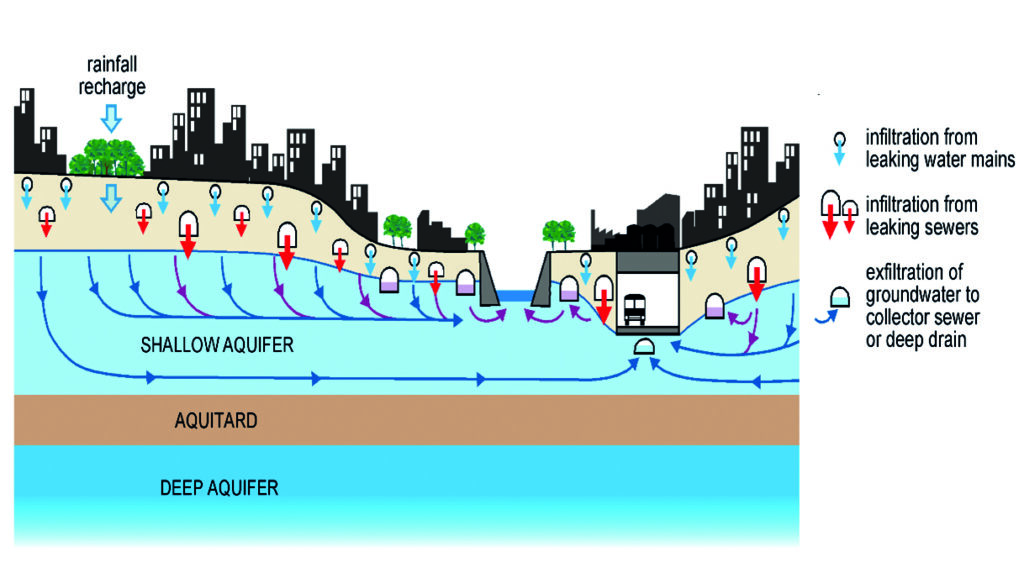Stephen Foster and Radu Gogu are authors of a new publication to provide guidance for water utilities and municipal authorities on assessing and managing how their activities can impact groundwater. Here they explain the necessity of addressing this complex relationship.
Groundwater is an important resource, but under certain circumstances it can also be a costly nuisance. Water utilities and private abstractors use it as a secure source of water supply, and municipal authorities have to manage their activities around this resource when using urban underground space for building facilities and transportation infrastructures. However, these agencies often pay little attention to groundwater once their wells are installed, or their subsurface construction is completed.
In urban areas especially, groundwater systems are subject to complex relationships with water supply provision, sanitation arrangements and subsurface construction, and these relationships need to be systematically evaluated and managed to avoid counter-productive outcomes.
Groundwater, especially from deeper aquifers, is a critical resource for enhancing urban water supply security for climate change adaptation. But to achieve such use sustainably requires effective promotion of an appropriate level of adaptive management and quality protection, according to local circumstances. Moreover, groundwater conditions at shallower depths are an essential issue when it comes to sound sanitation planning.
Lima in Peru has systematically introduced conjunctive use of groundwater and river water to halt the earlier rapid dewatering of a strategic coastal aquifer in a hyper-arid setting
The staff of water utilities, supported by those of water resource agencies and municipal sanitation offices (managers, engineers and scientists), who work to improve urban water supply resilience and to control the carbon footprint of water supply will inevitably be required to get more involved in groundwater management. They will need to undertake essential diagnostic procedures on their groundwater systems to guide the formulation of strategic management actions on controlling groundwater use and protecting groundwater quality.
In recent years, municipal governments have been making much more use of urban subsurface space for construction (especially down to 20 metres depth) – notably of deep basements, vehicle parking lots and transportation routes. Traditionally the drainage and stability of such structures were achieved through individual site investigation and design, but today a more coordinated approach is needed to manage shallow groundwater conditions. This situation is often aggravated by rising shallow water tables due to the urbanisation processes themselves and to the impact of climate change. Thus, the staff of municipal government authorities (engineers, planners and managers), who work to improve the design and execution of subsurface urban infrastructure to avoid potentially costly drainage issues, structural instability and flooding problems, need to have a clear understanding of the nature of shallow groundwater conditions, and especially the presence of shallow and/or rising water tables. This will enable them to take critical action on the integrated management of shallow groundwater.
Much can be learnt from an in-depth analysis of the case histories of cities that have made significant progress in managing their groundwater sustainably. An appreciation of their hydrogeological settings, technical issues and institutional arrangements are critical to the analysis. Hamburg in Germany has successfully undertaken a long transition to switch from filtered river water to protected groundwater for all its public water supply. Bangkok has acted persistently in regulatory mode to control – and in some areas stop – groundwater abstraction, to halt continuously falling groundwater levels, which were causing serious land subsidence and a seawater flooding hazard.
Lima in Peru has systematically introduced conjunctive use of groundwater and river water to halt the earlier rapid dewatering of a strategic coastal aquifer in a hyper-arid setting. These and other examples can help inspire appropriate action on a widespread geographical basis. •
The authors
Stephen Foster and Radu Gogu are Chair and Deputy Chair of IWA’s Groundwater Management Specialist Group
Guide to managing groundwater
The IWA Groundwater Management Specialist Group has recently prepared a Guidebook for Water Utilities & Municipal Authorities on Groundwater Assessment and Management, for sustainable water supply and coordinated subsurface drainage. This aims to highlight what water utilities and municipal government can do to improve groundwater assessment and management to avoid the many ‘nasty surprises’ that uncontrolled groundwater can pose. It is set to become an essential reference for all those working in water utilities on source development and management, and in local government to ensure planning takes into account the secure use of urban subsurface space.
Guidebook for Water Utilities & Municipal Authorities on Groundwater Assessment and Management, ISBN: 9781789063103, written by Stephen Foster & Radu Gogu, was published by IWA Publishing in June 2022.
Figure 1
Interactions between water utility operations and groundwater
This schematic shows the considerable complexity of the interactions and their importance in terms of long-term sustainability and economic cost.
Figure 2
Evolution of groundwater use and dependency with urban population growth
This diagram shows the relationship between investment in public water supply and the growth of private water use from groundwater. The timing of major sources of ‘imported water’ are significant features.
Figure 3
The role of water utilities in the general scheme of groundwater quality protection is of critical importance. Water utilities are involved in the activities indicated to provide a focus on the protection of their groundwater resources and avoid the need for ‘advanced water treatment’ and the implications that has on carbon footprint.
Figure 4
Relationship between the shallow groundwater system and urban infrastructure
This diagram shows the complexity of interactions between groundwater and urban infrastructure and the importance of understanding the shallow groundwater flow regime to design deep subsurface infrastructure.












